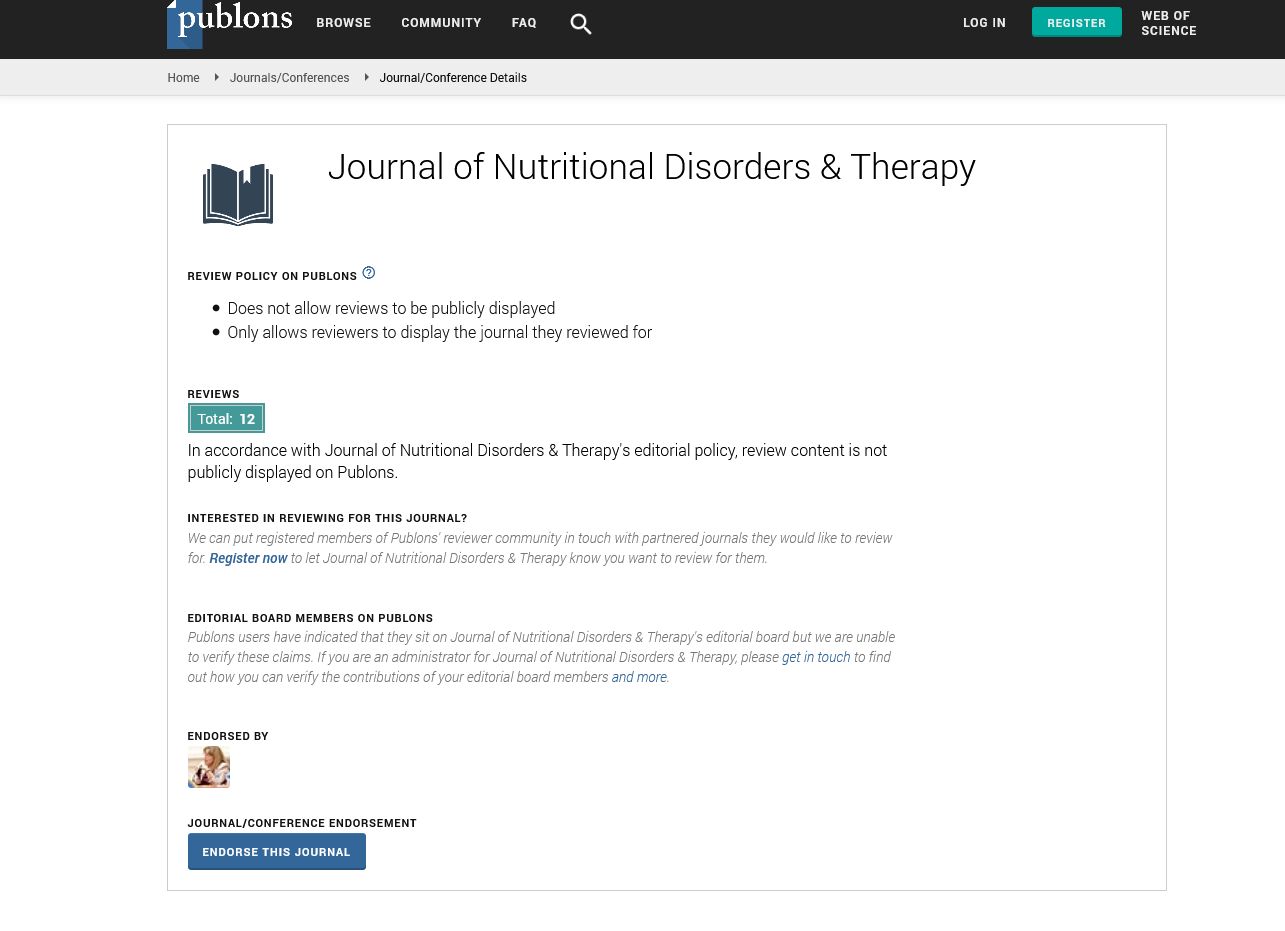Indexed In
- Open J Gate
- Genamics JournalSeek
- Academic Keys
- JournalTOCs
- Ulrich's Periodicals Directory
- RefSeek
- Hamdard University
- EBSCO A-Z
- OCLC- WorldCat
- Publons
- Geneva Foundation for Medical Education and Research
- Euro Pub
Useful Links
Share This Page
Journal Flyer

Open Access Journals
- Agri and Aquaculture
- Biochemistry
- Bioinformatics & Systems Biology
- Business & Management
- Chemistry
- Clinical Sciences
- Engineering
- Food & Nutrition
- General Science
- Genetics & Molecular Biology
- Immunology & Microbiology
- Medical Sciences
- Neuroscience & Psychology
- Nursing & Health Care
- Pharmaceutical Sciences
Seaweed as a source of Functional foods
26th International Conference on Clinical Nutrition
March 08, 2021 | WEBINAR
Zoobiya Islam
Sharda University, India
Posters & Accepted Abstracts: J Nutr Disorders Ther
Abstract:
Seaweed is a common name for species of marine plant and algae that found in the ocean as well as river, lakes, and other water bodies. They are classified taxonomically into three groups— Chlorophyta, Phaeophyceae, and Rhodophyta, corresponding to green, brown, and red algae, respectively. They contain different type of bioactive compound can play a important therapeutic role in disease prevention in humans. Bioactives compound like polysaccharides, pigments, fatty acids, polyphenols and peptides have been proven to possess various beneficial biological properties that could potentially contribute to functional food and nutraceutical development. These bioactive are explored for functional properties such as antioxidant, antibacterial, anticancer, antidiabetic, antitumor, antiviral, anti-inflammatory and anticoagulant properties, both in an in-vitro and in-vivo model system. Apart from baioactive compound They are excelant source of essential minerals such as sodium, calcium, magnesium, potassium, chloride, sulfate, phosphorus, and micronutrients such as iodine, iron, zinc, copper, selenium, molybdenum, fluoride, manganese, boron, nickel, cobalt, etc. they are a primary source of iodine, providing the daily iodine requirement (150 μg/day). Because of their high mineral content, seaweed can be used as a dietary supplement to help achieve the recommended daily amounts of some macro minerals and trace elements. Seaweeds also are a good source of protein and B-group vitamins (particularly B1 and B12), vitamin A, and vitamin E. Seaweed foods offer one of the few vegetarian alternatives B12 in the diet. B12 is not required or synthesized by higher plants so fruits and vegetables are poor sources of vitamin B12.

